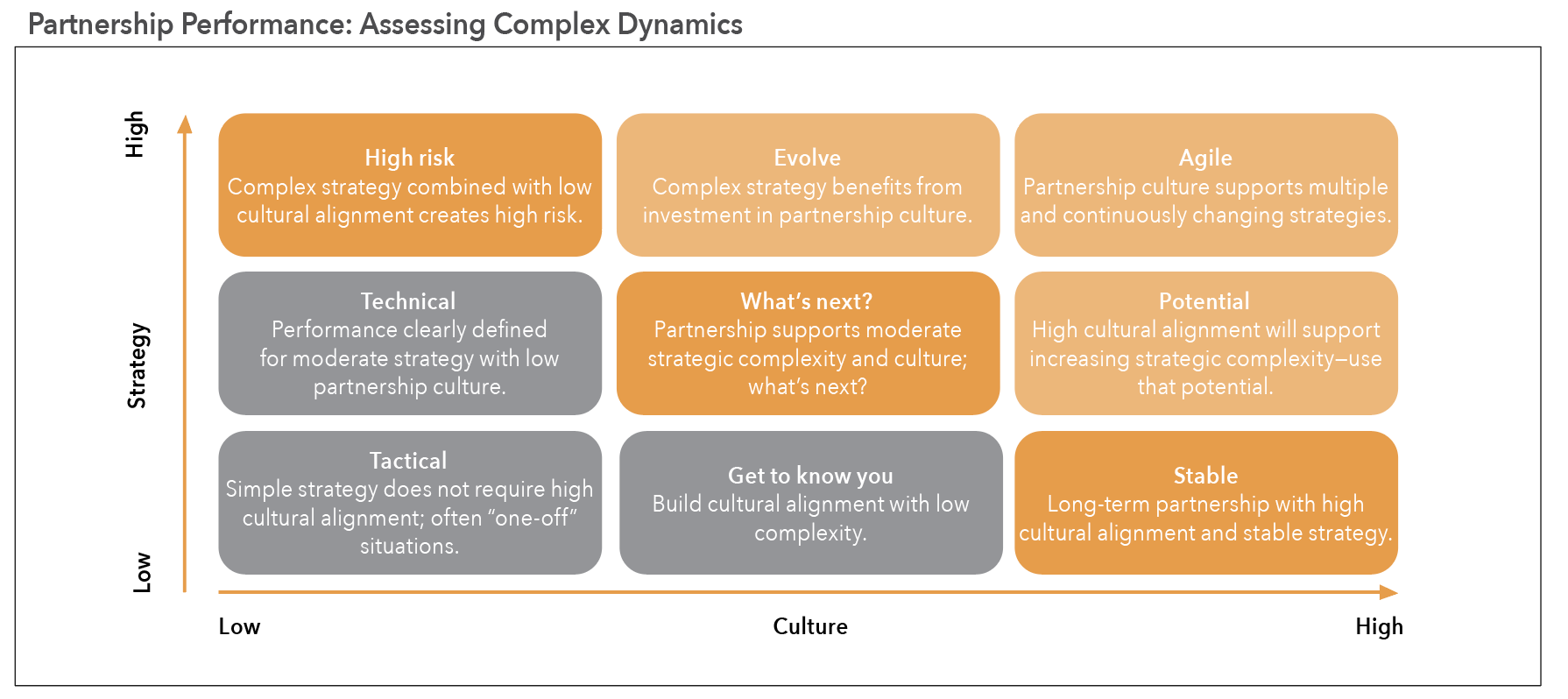Harmonizing Outsourcing to Keep Clinical Trials on Track
A shared partnership culture is critical in navigating today’s complex terrain.

In the past decade, the clinical research industry has experienced a proliferation of new outsourcing models and operational strategies in which contract research organizations (CROs) and sponsors are working in more integrated ways. Against the background of the increasingly complex clinical research landscape, we have seen a rise in strategic partnerships and partnership-driven approaches to outsourcing as a way to navigate that complexity and more effectively deliver clinical trials.
Now more than ever, developing a shared partnership culture is important to support the more complex strategic objectives and operative functions that keep clinical trials humming.
Tools to manage outsourcing strategy
In this constantly evolving clinical research landscape with global trials that are only growing in size and intricacy, managing relationships with vendors and maintaining internal staff is an important element of successful operations. To support these efforts, sponsors and CROs alike can leverage certain tools and strategies for assessing and characterizing vendor relationships to identify opportunities within the outsourcing strategy.
One such tool is the typical nine-box model for performance assessment, which we have adapted to fit the characteristics of sponsor/vendor relationships (see Figure 1 below). In the adapted version, the complexity of the strategic demands and the cultural positioning of the relationship map across the x and y axes. Assessing partnerships with this model allows you to map them into low, mid, and high sectors, generating a more precise determination of their current state and requirements.
Figure 1. The nine-box model for performance assessment adapted to sponsor/vendor relationships.
Source: ICON plc

With this understanding, it becomes easier to guide decisions on investment, alignment, and strategy. It can also reveal opportunities to scale strategic complexity and capitalize on industry changes and advancing technology, or it can steer investments in cultural alignment to bolster operations within the partnership.
Charting a course
Not every vendor relationship must track to the high sector of the nine-box model and operate as an integrated partnership. For example, a “tactical” dynamic with low strategic complexity is focused on simple execution and, therefore, won’t require the cultural integration of a high-complexity agile partnership.
However, clinical research is a large-scale, complicated field with global stakeholders. With the consolidation in the CRO industry, many partnerships now include global CROs and large pharmaceutical sponsors with needs that span broader scopes. The regular incidence of changing roles and role definitions, globalizing tasks, changing outsourcing strategy, implementing multiple types of strategy within a single partnership, or leveraging multiple partners all add layers of intricacy that then require more cultural alignment to achieve success. In effect, this requires a strategic shift toward the high sector of the nine-box model. Mapping your partnership to the high sector means you have cultivated cultural alignment across organizations and agility within the outsourcing strategy. In practice, this agility may include multiple outsourcing strategies within a single partnership to best fit each situation’s specific needs.
Strategic alignment
Partnerships within the high sector require a dynamic relationship with continuous assessment and adjustment to maintain the cultural alignment that underpins the operational agility.
The main pillars and key metrics of partnership culture for high-complexity and functioning teams are alignment, branding, and control—or what we refer to as the ABCs of partnership culture. Aligning both companies around shared vision, mission, and values with high-level leadership commitment, backed by clear objectives and targets, sets the tone for achieving those shared clinical research goals. Deliberate, considered branding efforts solidifies and reinforces a combined identity for the partnership while unified control measures ensure accountability.
A human approach
In what can feel like a stark contrast against the clear, objective, and scientific setting of clinical research and the traditionally contract-execution approach to outsourcing, successful players in the industry are tapping into the “human” side to drive efficiency, consistency, and alignment. Not every aspect of cultural alignment can be translated and measured with typical controls. As such, there is an element of tuning in and knowing what it should feel like.
In harmonized outsourcing partnerships, it can feel like trust in deep personal relationships at all levels. In complex high-sector outsourcing models, the goal is to align across roles and experience levels between the partner organizations, but differences will exist. With an aligned culture of partnership, both parties can trust everyone to work together to identify and resolve issues within a shared framework.
Of course, there will always be challenges. But when organizations are aligned, they can create solutions together. When there is a cultural incongruence between organizations, the dynamic can tend toward feeling more combative than collaborative, or a certain resistance emerges that limits forward momentum. This pulls focus and energy and redirects it to assigning blame before seeking solutions, or the issues are hidden rather than communicated directly. When each organization has invested in establishing their own core cultural values, however, it provides a solid base for the partnership.
Metrics that drive excellence
Trust and a true sense of alignment are essential to high-performing partnerships, but it is important to back those with metrics to maintain operational excellence within a well-controlled partnership. Carefully selected key performance indicators (KPIs) can better illustrate the correlation between strategy and operational achievements. However, ill-fitting KPIs can skew decision-making or lead to a misallocation of vital resources. Identifying the right KPIs can drive mutually valuable outcomes, provide a rallying point for cross-organizational efforts,and encourage teamwork while generating precise, transparent data that can trigger corrective action to help course-correct. For agile partnerships running large, challenging, or intricate studies, KPIs serve the partnership best when shared, as opposed to two sets of metrics divided and tracked between organizations.
Choosing partnership metrics that provide the right sets of data for governance can be challenging. ICON has identified four foundational categories that bear meaningful metrics: finance, quality, operations, and relationship health.
Each of these categories can be further divided into specific operational metrics that reflect more granular levels to fit the outsourcing partnership’s goals and needs. The four categories of metrics that support mutual success in strategic partnerships:
Finance
- Turnaround times for work order development
- Payments to sites
- Revenue burn rate
- Plan to actuals for study
Quality
- Audit findings
- Monitoring turnaround time for closing out action items
- Compliance rates
Operations
- Protocol amendments
- Cycle times
- Enrollment rates
Relationship health
- Quarterly two-way surveys (or one-on-one interviews) to measure the satisfaction of both teams, including opinions on training, onboarding, and operating processes
- Staff retention rate
Transparency across these metrics is crucial for a trusting, cohesive partnership whether the results are trending positively or negatively. With the same data in hand, teams can problem-solve together around the shared objectives and within the same framework to ultimately arrive at solutions that minimize risk and drive success. This is especially important when multiple outsourcing models are deployed within a single relationship.
Delivering clinical trials together
Understanding the unique requirements and expectations of each outsourcing strategy across vendors or within single partnerships is vital to their success. The complexity of the clinical research landscape is a fact that continues to evolve, driving the variety of outsourcing models and operational strategies that increasingly depend on partnerships to run efficiently.
Applying these tools and methods to understand and optimize these relationships between sponsors and vendors will continue to be a critical component of delivering clinical trials effectively.
Debbie Gilmore, vice president, strategic alliance management, ICON plc
